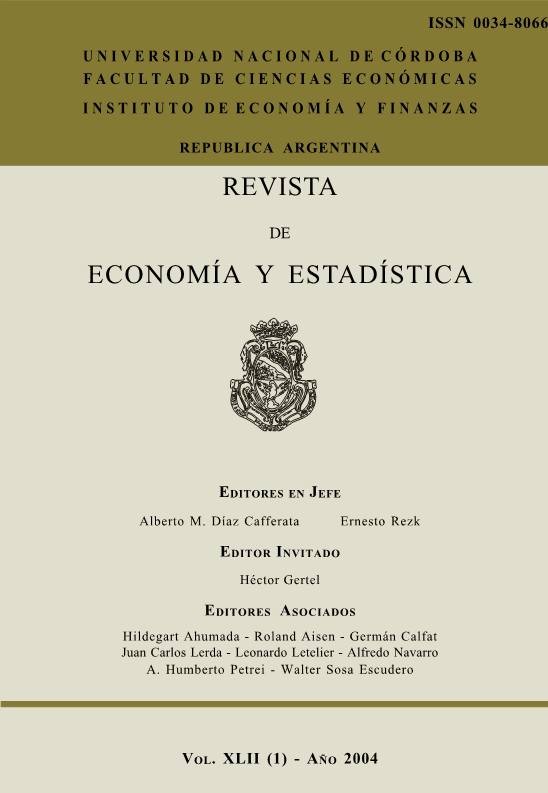Teachers' income in Argentina: high or low?
DOI:
https://doi.org/10.55444/2451.7321.2004.v42.n1.3798Keywords:
Mincer equation, relative income of teachers, Oaxaca decompositionAbstract
Relative income of teachers is analyzed in Argentina. A Mincerian incomeequation is estimated for a cross section sample of individuals from 1998Permanent Household Survey (EPH) over twenty-nine metropolitan areasand a Oaxaca decomposition procedure is followed to ascertain whethercharacteristics or returns explain better the log mean difference in incomeof teachers and other relevant groups used for comparison. Hourly incomeof teachers are found to be higher than the average for the economy,slightly lower than that of workers with post-secondary studies, but lowerdefinite respective of professionals. Characteristics is a critical source ofteacher-non-teacher income differential. Its relative weight changesaccording to the group of comparison chosen. Substracting the effect ofcharacteristics, income difference is reduced by 40 % in the total population,16% in the post-secondary population but has the reverse effect of penalizingteachers vs professionals.
Downloads
Downloads
Published
Issue
Section
License
Copyright (c) 2004 Verónica Herrero, Mariana De Santis, Héctor R. Gertel

This work is licensed under a Creative Commons Attribution-NonCommercial-NoDerivatives 4.0 International License.
Authors who have publications with this journal agree to the following terms:
Authors retain their copyright and grant the journal the right of first publication of their work, which is simultaneously subject to the Creative Commons Attribution-NonCommercial-NoDerivatives 4.0 International License that allows third parties to share the work provided that its author and first publication in this journal are indicated.
Authors may adopt other non-exclusive licensing arrangements for distribution of the published version of the work (e.g. depositing it in an institutional telematic archive or publishing it in a monographic volume) as long as the initial publication in this journal is indicated.
Authors are allowed and encouraged to disseminate their work via the Internet (e.g. in institutional telematic archives or on their website) before and during the submission process, which can lead to interesting exchanges and increase citations of the published work. (See The Open Access Effect)














